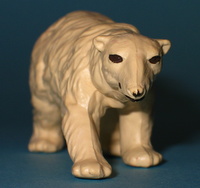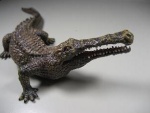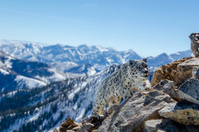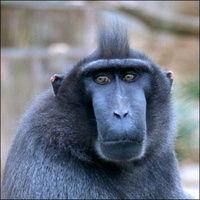| | Mathison Museum of Natural History |  |
|
+17Birdsage Bonnie Saarlooswolfhound widukind Joliezac spacelab Pardofelis landrover Megaptera lucky luke rogerpgvg Jill George pipsxlch Duck-Anch-Amun Kikimalou Roger 21 posters |
|
| Author | Message |
|---|
rogerpgvg

Country/State : UK
Age : 54
Joined : 2016-04-29
Posts : 3894
 |  Subject: Re: Mathison Museum of Natural History Subject: Re: Mathison Museum of Natural History  Thu Dec 23, 2021 1:06 pm Thu Dec 23, 2021 1:06 pm | |
| - bmathison1972 wrote:
- Those are all the same figures; the difference in color is an imaging artifact. I tried to 'fix' the color in Photoshop but I couldn't.
Those various aquarium 'books' (1-6) were released at various aquariums, however. It's possible they were released at multiple different aquariums and mine happened to have been from Enoshima (?) It's possible. Interestingly, if you check the bases of this particular series on this website, then some have "Enoshima aquarium" on it and some don't (it's of course possible that the photographer mixed up the bases): https://ninjaaquarium.web.fc2.com/aqua/zuroku/zuroku4/index.html |
|
  | |
bmathison1972

Country/State : Salt Lake City, UT
Age : 52
Joined : 2010-04-13
Posts : 6710
 |  Subject: Re: Mathison Museum of Natural History Subject: Re: Mathison Museum of Natural History  Thu Dec 23, 2021 1:09 pm Thu Dec 23, 2021 1:09 pm | |
| - rogerpgvg wrote:
- bmathison1972 wrote:
- Those are all the same figures; the difference in color is an imaging artifact. I tried to 'fix' the color in Photoshop but I couldn't.
Those various aquarium 'books' (1-6) were released at various aquariums, however. It's possible they were released at multiple different aquariums and mine happened to have been from Enoshima (?)
It's possible. Interestingly, if you check the bases of this particular series on this website, then some have "Enoshima aquarium" on it and some don't (it's of course possible that the photographer mixed up the bases): https://ninjaaquarium.web.fc2.com/aqua/zuroku/zuroku4/index.html The lobster and king penguin are labeled correctly and have 'Enoshima' on them; my guess is that different aquariums sold these and some may have been personalized for a specific aquarium. EDIT: My lobster and Daphnia figures also have 'Enoshima' on them (those are the only three I have from this set). |
|
  | |
widukind

Country/State : Germany
Age : 48
Joined : 2010-12-30
Posts : 45745
 |  Subject: Re: Mathison Museum of Natural History Subject: Re: Mathison Museum of Natural History  Thu Dec 23, 2021 4:34 pm Thu Dec 23, 2021 4:34 pm | |
| |
|
  | |
Caracal

Country/State : France
Age : 65
Joined : 2018-10-24
Posts : 7252
 | |
  | |
bmathison1972

Country/State : Salt Lake City, UT
Age : 52
Joined : 2010-04-13
Posts : 6710
 |  Subject: Re: Mathison Museum of Natural History Subject: Re: Mathison Museum of Natural History  Fri Dec 24, 2021 2:35 pm Fri Dec 24, 2021 2:35 pm | |
| Species: Balanus rostratus Hoek, 1883 (rostrate barnacle) About the Figure: Manufacturer: Kitan Club Series: Nature Techni Colour - Barnacles Year of Production: 2012 Size/Scale: Figures vary from 3.5-4.0 cm tall, all within scale 1:1 Frequency of species in toy/figure form (at time of posting): Very rare (possibly unique to this collection) Miscellaneous Notes: There are four figures of this species in this set. Three of them come together to form a small cluster. The fourth is a duplicate of one of the other three and was designed as a strap figure (as indicated by the loop on the top). About the Animal: Geographic distribution: North Pacific Habitat: Sessile organisms, usually colonizing rocks and mollusk shells in coastal areas Diet: Plankton IUCN Status (at time of posting): Not Evaluated Miscellaneous Notes: Balanus rostratus is sometimes considered a pest of aquaculture, especially when barnacles overgrow beds of scallops. However, B. rostratus has nutritional value and itself is eaten! [You must be registered and logged in to see this image.] |
|
  | |
Pardofelis

Country/State : Spain
Age : 40
Joined : 2019-01-12
Posts : 2144
 |  Subject: Re: Mathison Museum of Natural History Subject: Re: Mathison Museum of Natural History  Fri Dec 24, 2021 2:47 pm Fri Dec 24, 2021 2:47 pm | |
| Do you mind if I spam your thread with an identification request? Maybe you, as an American arthropod specialist, know the answer, or know somebody that can solve it... [You must be registered and logged in to see this link.]This acorn barnacle was unsigned at New England aquarium (Boston, Massachusetts). Doing a bit of research I found it very similar to Balanus nubilus but I don't have enough knowledge for ensure the ID or for rule out others... Thanks my friend :) _________________ My collection:- (Details):
Homemade: 106
CollectA: 54
Colorata: 31
Safari LTD: 29
Schleich: 20
Papo: 16
Kaiyodo: 13
Mojo Fun: 8
Ikimon/Kitan Club: 6
Southland Replicas: 6
Bullyland: 4
PNSO: 3
CBIOV: 2
Eikoh: 2
Yujin: 2
Takara Tomy:1
Nayab: 1
Happy Kin: 1
Natural History: 1
Science & Nature: 1
Total: 307 |
|
  | |
Caracal

Country/State : France
Age : 65
Joined : 2018-10-24
Posts : 7252
 | |
  | |
widukind

Country/State : Germany
Age : 48
Joined : 2010-12-30
Posts : 45745
 |  Subject: Re: Mathison Museum of Natural History Subject: Re: Mathison Museum of Natural History  Sat Dec 25, 2021 7:44 am Sat Dec 25, 2021 7:44 am | |
| |
|
  | |
bmathison1972

Country/State : Salt Lake City, UT
Age : 52
Joined : 2010-04-13
Posts : 6710
 |  Subject: Re: Mathison Museum of Natural History Subject: Re: Mathison Museum of Natural History  Sat Dec 25, 2021 2:20 pm Sat Dec 25, 2021 2:20 pm | |
| Species: Suricata suricatta (Schreber, 1776) (meerkat) About the Figure: Manufacturer: Papo Series: Wild Animals Year of Production: 2008 Size/Scale: Standing figure 6.4 cm tall. Body length (excluding tail) 6.8 cm for a scale of 1:3.5-1:5 Frequency of species in toy/figure form (at time of posting): Common Miscellaneous Notes: These two figures were sold individually, but they were also sold as part of a box set that contained a third pose. I have tried to find the third to complete the set, but it seems it was only available in that box set, which is now retired. About the Animal: Geographic distribution: Southern Africa Habitat: Arid savanna and plains with appropriate soil for burrow construction Diet: Primarily arthropods; also small vertebrates, eggs, seeds IUCN Status (at time of posting): Least Concern Miscellaneous Notes: Suricata suricatta is a highly social animal and lives in colonies of up to 30 individuals. There may be 1-3 family groups within a colony, each consisting of a breeding pair and their offspring. Colonies are highly territorial and encounteres between different colonies are often violent. Colonies also exhibit sentinel behavior, whereby a male will stand guard and keep a lookout for potential predators. If a predator is spotted the sentinel will alert members of the colony above ground to head for safety. Sentinels rotate throughout the day, with the changing of the guard annouced vocally! [You must be registered and logged in to see this image.] |
|
  | |
Roger
Admin

Country/State : Portugal
Age : 50
Joined : 2010-08-20
Posts : 35835
 |  Subject: Re: Mathison Museum of Natural History Subject: Re: Mathison Museum of Natural History  Sat Dec 25, 2021 2:28 pm Sat Dec 25, 2021 2:28 pm | |
| Curiously from Papo's trio, I only have the one you're missing. I got it as a gift from a forum member that gave up from collecting. These are the best meerkats you can get. It is a fact that the one I have has the most unusual and coolest pose but the standing is always the most representative. |
|
  | |
Joliezac

Country/State : New Jersey, USA
Age : 22
Joined : 2021-04-26
Posts : 2428
 |  Subject: Re: Mathison Museum of Natural History Subject: Re: Mathison Museum of Natural History  Sat Dec 25, 2021 2:45 pm Sat Dec 25, 2021 2:45 pm | |
| I love those meerkats! So detailed and great poses! I wish I had the third sitting one from the trio, definitely the best meerkats.
_________________
Jolie
Animal Ark Website
Animal Figure Photography Website
|
|
  | |
widukind

Country/State : Germany
Age : 48
Joined : 2010-12-30
Posts : 45745
 |  Subject: Re: Mathison Museum of Natural History Subject: Re: Mathison Museum of Natural History  Sun Dec 26, 2021 11:17 am Sun Dec 26, 2021 11:17 am | |
| |
|
  | |
bmathison1972

Country/State : Salt Lake City, UT
Age : 52
Joined : 2010-04-13
Posts : 6710
 |  Subject: Re: Mathison Museum of Natural History Subject: Re: Mathison Museum of Natural History  Sun Dec 26, 2021 2:04 pm Sun Dec 26, 2021 2:04 pm | |
| Species: Oxyuranus microlepidotus (McCoy, 1879) (inland taipan; fierce snake) About the Figure: Manufacturer: Takara Tomy A.R.T.S. Series: Venomous Snakes Year of Production: 2013 Size/Scale: Figure 6.0 cm across its widest points. Body length 25.0 cm for a scale of 1:7.2-1:10 Frequency of species in toy/figure form (at time of posting): Very rare Miscellaneous Notes: Figures in this set come with a flat, dark, translucent green base (see inset) with the Latin and Japanese names of the animal and the degree of toxicity using skulls-and-crossbones on a 1-5 scale. About the Animal: Geographic distribution: Australia (Channel Country) Habitat: Arid floodplains, dunes, rocky outcrops Diet: Mammals, primarily rodents and dasyurids IUCN Status (at time of posting): Least Concern Miscellaneous Notes: Oxyuranus microlepidotus is extremely venomous and is sometimes considered the most venomous snake in the world, at least in terms of venom toxicity. The venom consists of neurotoxins, hemotoxins, myotoxins, hyaluronidase, and possibly nephrotoxins and haemorrhagins. Initial symptoms after a bite include pain, headache, vomiting, abdominal pain, diarrhea, dizziness, and seizures. Shortly thereafter, envenomation leads to a cascade of multiorgan poisoning including neurotoxicity, coagulopathy, rhambdomyolysis, respiratory failure, kidney failure, and eventually death. The mortality rate is very high, over 80% in untreated cases. [You must be registered and logged in to see this image.] |
|
  | |
Kikimalou
Admin

Country/State : Lille, FRANCE
Age : 60
Joined : 2010-04-01
Posts : 21169
 |  Subject: Re: Mathison Museum of Natural History Subject: Re: Mathison Museum of Natural History  Sun Dec 26, 2021 3:39 pm Sun Dec 26, 2021 3:39 pm | |
| My favorite meerkats and a wondeful Inland taipan  |
|
  | |
widukind

Country/State : Germany
Age : 48
Joined : 2010-12-30
Posts : 45745
 |  Subject: Re: Mathison Museum of Natural History Subject: Re: Mathison Museum of Natural History  Sun Dec 26, 2021 7:19 pm Sun Dec 26, 2021 7:19 pm | |
| A figure from one of the best snake set ever |
|
  | |
bmathison1972

Country/State : Salt Lake City, UT
Age : 52
Joined : 2010-04-13
Posts : 6710
 |  Subject: Re: Mathison Museum of Natural History Subject: Re: Mathison Museum of Natural History  Mon Dec 27, 2021 2:08 pm Mon Dec 27, 2021 2:08 pm | |
| Species: Elaphurus davidianus Milne-Edwards, 1866 (Père David's deer) About the Figure: Manufacturer: CollectA Series: Wildlife Year of Production: 2018 Size/Scale: Height at shoulder 6.0 cm for as scale of 1:20 Frequency of species in toy/figure form (at time of posting): Very rare Miscellaneous Notes: The only other figure of this species I am aware of is a small tube-style figure by Joy City Ltd. Ikimon was supposed to release a small figure of this species earlier this year as part of a Yangtze collection, but at this point I am not sure if or when we'll ever see that set... About the Animal: Geographic distribution: Historic range was northeastern and east-central China; today only in the Beijing Milu Park, Dafeng Milu Natural Reserve, and Tian'ezhou Milu National Nature Reserve Habitat: River valleys, swamps, marshland Diet: Grasses, aquatic plants IUCN Status (at time of posting): Extinct in the Wild Miscellaneous Notes: During the Pleistocene, E. davidianus was distributed throughout much of Manchuria. During the Holocene, after the Last Glacial Period, its range narrowed to swamps and wet lowlands of northeastern China. The species is well-adapted to a semi-aquatic lifestyle, often wading in water a meter deep and capable of swimming. The hooves of E. davidianus are wide and adapted to safely walking in mud, so as not to sink in the substrate. [You must be registered and logged in to see this image.] |
|
  | |
Roger
Admin

Country/State : Portugal
Age : 50
Joined : 2010-08-20
Posts : 35835
 |  Subject: Re: Mathison Museum of Natural History Subject: Re: Mathison Museum of Natural History  Mon Dec 27, 2021 3:52 pm Mon Dec 27, 2021 3:52 pm | |
| This is one of the multiple CollectA miracles. When Schleich was by far the most debated brand on forum, I remember collectors asking for unusual species but none as obscure as this one. Though, CollectA imported to this hobby, a number of species that were not even in our best dreams. It is even more notorious when the figure represents a deer because these figures have poor sale performances and they are complex in terms of manufacturing. If deer are still relatively common in toy shape, it is surely thanks to the Bambi fawns and surely they need parents. With the exception of reindeer, does are particularly hard to sell.
Another point about CollectA is the quality, not just diversity. The quality of this model is superior and we can tell the same about the woodland caribou, new white-tail buck, fallow deer. I believe the next deer to be released by CollectA will be a new moose even if I consider the old model quite decent albeit the outdated finish. |
|
  | |
Caracal

Country/State : France
Age : 65
Joined : 2018-10-24
Posts : 7252
 |  Subject: Re: Mathison Museum of Natural History Subject: Re: Mathison Museum of Natural History  Mon Dec 27, 2021 7:37 pm Mon Dec 27, 2021 7:37 pm | |
| You're right CollectA gave some very few known species to us (Saola!) Beautiful model and display!   |
|
  | |
bmathison1972

Country/State : Salt Lake City, UT
Age : 52
Joined : 2010-04-13
Posts : 6710
 |  Subject: Re: Mathison Museum of Natural History Subject: Re: Mathison Museum of Natural History  Tue Dec 28, 2021 1:24 pm Tue Dec 28, 2021 1:24 pm | |
| Species: Solaster endeca (Linnaeus, 1771) (northern sun star; purple sun star) About the Figure: Manufacturer: Play Visions Series: Starfish Year of Production: 1996 Size/Scale: Armspan 6.0 cm for a scale of 1:3.3-1:6.7 Frequency of species in toy/figure form (at time of posting): Very rare [unique as a sculpt, see below] Miscellaneous Notes: The Play Visions starfish were also released by an unknown (?) company that are just as good as the originals, at least in terms of the quality of the plastic and the paint jobs. The only difference is that figures in this other release doesn't have the common English name stamped on the underside, as Play Visions' figures do. They are marked with 'S.H.' however, which could refer to the Hong Kong-based company, Shing Hing Toys. It is likely this second company worked with whoever originally produced the PV figures (assuming they didn't produce them themselves). Today's figure is one of those specifically marketed by Play Visions, but a couple that are likely to come up in the future are from this alternate set/company. About the Animal: Geographic distribution: Circumboreal in the Northern Pacific and Atlantic Oceans Habitat: Benthic, usually on rocky, muddy, or gravel substrates to 450 meters Diet: Marine invertebrates (other starfish, bivalves, sea cucumbers) IUCN Status (at time of posting): Not Evaluated Miscellaneous Notes: Like many other asteroids, S. endeca is capable of regrowing lost arms. [You must be registered and logged in to see this image.] |
|
  | |
Caracal

Country/State : France
Age : 65
Joined : 2018-10-24
Posts : 7252
 | |
  | |
bmathison1972

Country/State : Salt Lake City, UT
Age : 52
Joined : 2010-04-13
Posts : 6710
 |  Subject: Re: Mathison Museum of Natural History Subject: Re: Mathison Museum of Natural History  Wed Dec 29, 2021 2:03 pm Wed Dec 29, 2021 2:03 pm | |
| Species: Cyclops sp. About the Figure: Manufacturer: Ayano Katayama Series: Fascinating Microorganisms Year of Production: 2019 Size/Scale: Figure length 6.5 cm. Body length 5.0 cm for a scale of 50:1-10:1 [exact scale species dependent] Frequency of species in toy/figure form (at time of posting): Very rare Miscellaneous Notes: Figures in the Fascinating Microorganisms collection are flat and acyrlic, much like acrylic 'mascot' figures made by Ikimon. They are made by an artist named Ayano Katayama and sold on a site called minne (an Etsy-like site out of Japan). They are usually sold as keychains, but I had a custom set made without the holes to accommodate the chains. About the Animal: Geographic distribution: Cosmopolitan Habitat: Still and slow-moving freshwater, including lakes, ponds, canals, ditches, neglected swimming pools Diet: Aquatic vegetation, free-living nematodes, carrion IUCN Status (at time of posting): Not Evaluated Miscellaneous Notes: Members of the genus Cyclops are intermediate hosts for the parasitic nematode Dracunculus medinensis (Guinea worm disease) and human infection occurs from drinking water containing infected copepods. The disease was nearly eradicated through the use of water filtration, and 15 of the original endemic countries were considered eradicated by 2015. Today the disease occurs mainly in a handful of countries in central Africa (Mali, Angola, Cameroon, South Sudan, Chad, Ethiopia). There is been a re-emergence, especially in Chad, with dogs serving as a reservoir host. [You must be registered and logged in to see this image.] |
|
  | |
Jill

Country/State : USA
Age : 39
Joined : 2021-04-13
Posts : 2349
 |  Subject: Re: Mathison Museum of Natural History Subject: Re: Mathison Museum of Natural History  Wed Dec 29, 2021 3:12 pm Wed Dec 29, 2021 3:12 pm | |
| I love the taipan, and that is such an interesting way to create a microscopic animal figure. It's quite beautiful! |
|
  | |
Caracal

Country/State : France
Age : 65
Joined : 2018-10-24
Posts : 7252
 | |
  | |
widukind

Country/State : Germany
Age : 48
Joined : 2010-12-30
Posts : 45745
 |  Subject: Re: Mathison Museum of Natural History Subject: Re: Mathison Museum of Natural History  Thu Dec 30, 2021 11:33 am Thu Dec 30, 2021 11:33 am | |
| |
|
  | |
bmathison1972

Country/State : Salt Lake City, UT
Age : 52
Joined : 2010-04-13
Posts : 6710
 |  Subject: Re: Mathison Museum of Natural History Subject: Re: Mathison Museum of Natural History  Thu Dec 30, 2021 1:19 pm Thu Dec 30, 2021 1:19 pm | |
| Species: Allomyrina dichotoma (Linnaeus, 1771) (Japanese rhinoceros beetle) About the Figure: Manufacturer: F-toys Series: Encyclopedia of Insects Vol. 1; Insect Hunter Beetle and Stag Beetle Years of Production: 2007; 2011 Size/Scale: Male body length (including cephalic horn) 6.5 cm. Female body length 4.7 cm. Both in scale 1:1. Frequency of species in toy/figure form (at time of posting): Very common Miscellaneous Notes: This is the eighth time we've seen A. dichtotoma in the Museum, and all eight posts to date represent figures from different companies! The female figure is from the Encyclopedia of Insects Vol. 1 released in 2007. The male is from the 2011 edition of the Insect Hunter set; however, it is the same sculpt as the male that was in the 2007 set with the female (I don't have the original male). Almost every year going back to 2007, F-toys has released a set of beetles. Nearly every one of these sets has included at least one A. dichotoma, and in recent years two! I have actually stopped collecting the figures unless they represent new sculpts or species. The female in today's post is still the only female they produced (and despite the frequency of this species in toy form, it is one of less that five females I am aware of). In 2014, F-toys updated the sculpt of the male (I have examples of the updates and they will be reviewed in the Museum at a later date). About the Animal: Geographic distribution: Southeast Asia, including China, Korea, Taiwan, and Japan Habitat: Tropical and subtropical hardwood forests Diet: Larvae feed on organic detritus in soil; adults are attracted to sap flows IUCN Status (at time of posting): Not Evaluated Miscellaneous Notes: Like other large dynastines, A. dichotoma has marked sexual dimorphism. Males use their pronotal and cephalic horns to fight over females and to secure feeding sites. [You must be registered and logged in to see this image.][/i][/i] |
|
  | |
Sponsored content
 |  Subject: Re: Mathison Museum of Natural History Subject: Re: Mathison Museum of Natural History  | |
| |
|
  | |
| | Mathison Museum of Natural History |  |
|
